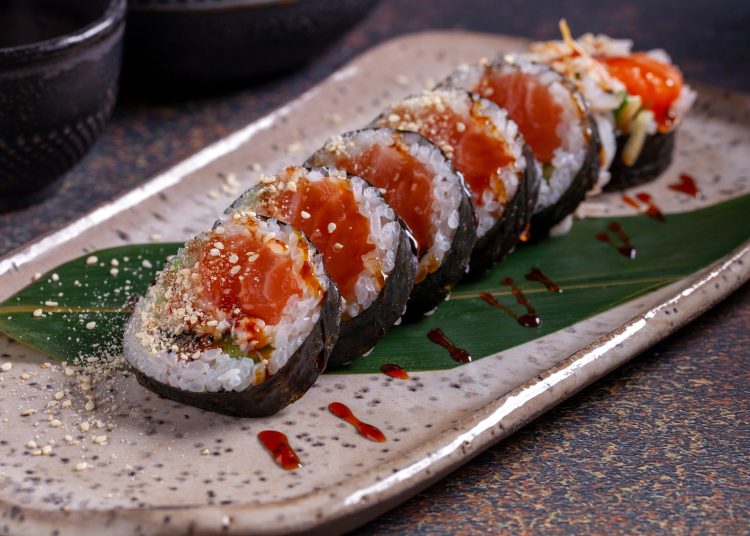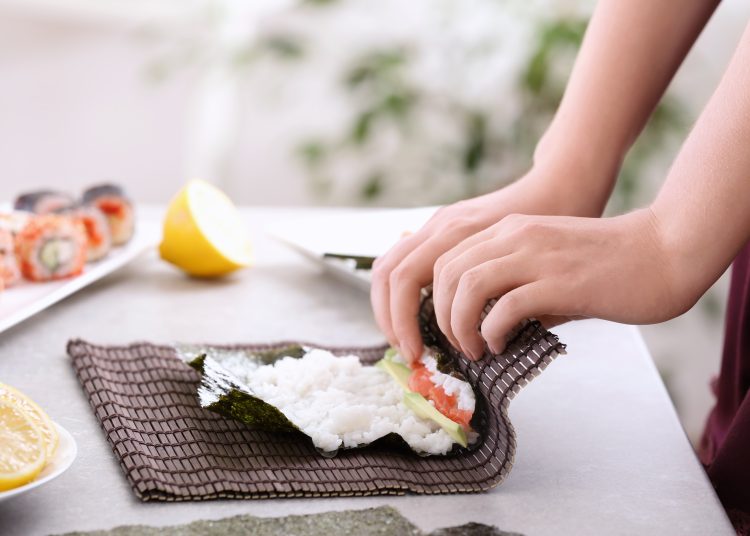Imagine biting into a fresh, vibrant roll of sushi. You taste the subtle tang of vinegar-seasoned rice, the crispness of fresh vegetables, and the delicate flavor of seafood, all wrapped in a sheet of seaweed. Sushi isn’t just a dish; it’s an art form, a cultural symbol of Japan that has found its way onto dining tables worldwide. Whether it’s a simple nigiri or an elaborate dragon roll, sushi’s combination of flavors and textures can be both humble and luxurious.
Recipe:

- Prepare sushi rice by mixing 2 cups of sushi or short-grain rice with 3 cups of water. Cook and season with a mix of rice vinegar, sugar, and salt.
- Lay out a nori sheet on a bamboo mat, spread the rice evenly, leaving space at the top.
- Add fillings like cucumber, avocado, or cooked shrimp in a line on the rice.
- Roll the sushi tightly using the mat, seal the end with water.
- Slice with a wet knife and serve with soy sauce, wasabi, and pickled ginger.
Culture and History:


You’re not just eating a meal when you indulge in sushi; you’re partaking in a centuries-old tradition that has evolved significantly over time. Originating in the 8th century as a method of preserving fish in fermented rice, sushi has grown into the culinary icon we know today. In the mid-19th century, Hanaya Yohei changed the sushi scene by creating nigiri sushi, which quickly became a popular item in Tokyo.
Sushi has been innovated and adapted in many places. Fusion sushi, which incorporates non-traditional ingredients like cream cheese and spicy mayo, has become a staple in many countries. The rise of plant-based sushi ensures that everyone, including vegans and vegetarians, can enjoy this dish.
Sushi’s cost varies. You might find yourself at a conveyor belt sushi joint with pieces costing just a couple of dollars, or at an upscale restaurant indulging in an omakase experience that could run over $300. Despite its origins as a dish for special occasions, it has become an everyday favorite for many.
The settings where you can enjoy sushi are as diverse as its ingredients. From the bustling streets of Tokyo with casual vendors to the serene ambiance of a high-end sushi bar, the experience can be dramatically different. However, the serving traditions remain largely the same. Sushi is typically accompanied by pickled ginger, wasabi, and soy sauce, and whether you opt for chopsticks or your hands, the focus is on enjoying each bite.
Next time you’re enjoying a roll of sushi, remember that you’re experiencing a piece of history. Each bite reflects a culinary tradition that has stood the test of time and continues to evolve, delighting palates around the globe.

